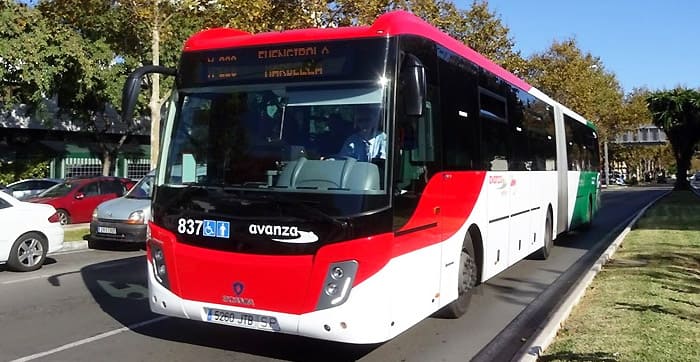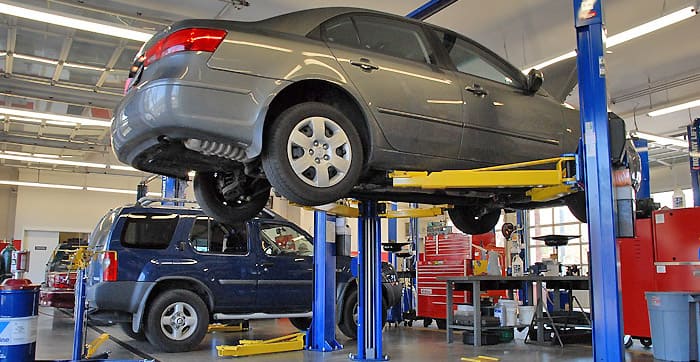Transport & driving in Spain
Today’s post is the third and final installment of a series of articles dealing with the cost of living in Spain. In the two previous entries, I’ve taken a foray into supermarket shopping, eating out, house prices and healthcare; with today’s focus being transport and driving in Spain.
So, without further ado, let’s get cracking on the topic of owning a car in Spain…
Owning a car
First thing’s first, the necessity of driving varies massively from one area to another.
Vehicle ownership in central Madrid, for example, is really rather pointless when you take everything into account. Parking spaces are at a premium – garages can cost up to €150 per month if you want off-road parking in the centre –, new taxes are being introduced to reduce traffic and carbon emissions, everything is so close at hand and public transport is so good.
So, unless you’re visiting your (or your partner’s) extended family in the barren plains of Castilla La Mancha every weekend, there’s really no point.
Conversely, if you live in one of Spain’s tight-knit pueblos, you will doubtless be more reliant on a car to get you from A to B. After all, you will be more remote, the terrain of inland Spain tends to be more hilly and public transport networks are (understandably) less developed.
“Why is this guy stating the obvious?”, you might be thinking. And quite rightly so. It stands to reason that you would have less need for a car in urban centres than in smaller towns.
Costa del Sol travel
Some alternatives to driving in Spain
The reason is that, here at VIVA, we often get asked by potential home buyers whether it’s completely necessary to own a car to get around the Costa del Sol. And, given the Coast’s large expanse and varied geography, the answer would also depend heavily on which area they’re looking to settle down in and their circumstances.
After all, the Costa del Sol is not just a sunny holiday resort. It is also home to thousands of international expats, thanks to its famed quality of life and its well-established amenities that remain open all year round.
One such comfort is living in a cosmopolitan coastal town and being walking distance from anything you could possibly need, thus negating the point of driving. Likewise, and specifically if you live on the eastern Costa del Sol between Fuengirola and Málaga, there is a cheap, clean and frequent overground train service that means you can easily avoid taking the car out.
Trains on the Costa del Sol
This inter-urban train, called cercanías in Spanish, connects various parts of the province’s coastline with the Málaga-Costa del Sol airport and costs between €1.80 and €3.60 for a one-way ticket and between €1.95 and €4.40 for a return ticket, depending on what stations you get on and off at.
It runs every 20 minutes, has a duration of 42 minutes for the full “C1” route from Fuengirola to Málaga Centro-Alameda and is well-known for being punctual and running year-round without suffering breaks in service.
For a timetable1 in pdf format, follow the link at the bottom of this post.
Buses and taxis
Local bus routes
With over 70 routes run by the transport company Avanza2, you will be able to get anywhere you want on the Costa del Sol by bus. As you would imagine, the frequency of each bus depends on the popularity of the destination, so there will be more buses going in and out of Marbella, for instance, than Alhaurín el Grande.
That said, as long as your residential complex or villa is within walking distance of your nearest bus stop, there’s no reason why you can’t get around by bus on a long-term basis. One-way tickets range from less than a euro to €4 or €5 and you can buy them online via the company’s website.

I’ve just done a quick search for the popular Estepona to Marbella route and this journey will cost you all of €3.32, although it looks like they do apply a small admin fee for advance bookings. Your best bet is to just wing it and jump on a bus, but you’ve got to remember to have cash on you, as I’m quite certain there’s no contactless or credit card payment system onboard.
In terms of this aspect of cost of living, then, it’s really quite inexpensive and renders driving in Spain largely unnecessary if you would rather not, don’t wish to change your driving licence over or have no desire to risk driving on the “wrong” side of the road.
Taxis
Another alternative to driving in Spain are taxis. A good idea if you’re eating out or you’ve had a few beers with friends and have missed the last bus/train, taxi ranks can be found in all towns, popular nightspots and major residential urbanisations.
The traditional white, metered cabs are numerous and not too expensive, while Uber and Cabify also have a huge presence on the Coast and offer secure payment and a fixed price: ideal for those who don’t yet know the area like the back of their hand.
Buying & maintaining a car in Spain
Where to buy: back home
If you’ve considered all options and believe that having a car is a must, I must point out that the new and second-hand car market is not as dynamic as in the UK, for instance, so prices tend to be higher compared to the general cost of living in Spain.

For this reason, many long-term residents bring vehicles from their own countries and register them here after six months, as per Spanish law. Often, purchasing a car in another country (factoring in the associated taxes and costs in Spain) is economically advantageous compared to buying a car here; hence why you see a wide variety of number plates on the roads when you’re driving around.
Where to buy: Spain
That said, you have to keep your eyes peeled for good deals on new and barely used (kilómetro cero) cars in Spain, as there are periodic financing offers and discounts depending on the volume of stock held by a particular dealership.
Another trend that’s becoming more common in Spain – as long as you can provide evidence of income – is long-term leasing. You have all the benefits of owning a new car without having to put down a deposit or, at worst, shelling out thousands of euros all in one go.
Services and insurance cover are typically included in the monthly rental fee, which is typically between €250 and €400 per month (depending on the car specifications) on a , three-, four- or five-year contract. Afterwards, you can choose to either pick another car and do the same, not renew the agreement or purchase the now-used vehicle at a discounted rate.
Servicing your car
From personal experience, vehicle maintenance costs are similar to other countries. That is to say, if you get your car serviced at the official garage you will be shafted, so it’s worth putting the feelers out for a friend of a friend who’s an honest and decent mechanic.

These independent garages – ie. not part of a big chain – are definitely the way to go for generic or minor mechanical issues, although the amount you’ll us them is directly related to the age and health of your car.
In Spain, the official vehicle inspection is called "ITV" (the "MOT" equivalent in the UK) and is obligatory every two years when your car gets to four years old. For cars older than 10 years, this becomes an annual inspection whose cost, in all cases, is around €40 or €50.
Cost of fuel
Driving in Spain and vehicle maintenance is affordable on a day-to-day basis thanks to moderate fuel costs. According to the latest daily figures3 at the time of writing, the average prices of diesel and unleaded 95 petrol at the pump are €1.24 per litre and €1.33 per litre respectively.
A re-cap
If you missed the two preceding blog posts about the quality of life in Spain, written from my point of view as a Brit living on the Costa del Sol, check them out here:
I hope you enjoyed this post on transport & driving in Spain as well as the other two before it on the topic of the cost of living! I’m interested in your feedback, though… Is there anything you disagree with? Is something missing, in your view? Please let me know in the comments below!
Sources:
1 http://siu.ctmam.ctan.es/docs/pdf/horarios/xlinea_160.pdf
2 http://malaga.avanzagrupo.com/en/lines/lineas
3 https://www.dieselogasolina.com/
https://www.aeropuertodemalaga-costadelsol.com/transportes/como-ir-en-tren.htm
 en
en




 Vlaams-Nederlands
Vlaams-Nederlands
2 Comments
Leave a Comment
DISCLAIMER
The opinions and comments expressed by contributors to this Blog are theirs alone and do not necessarily reflect the views of VIVA Homes Under the Sun Ltd, any of its associated companies, or employees; nor is VIVA to be held responsible or accountable for the accuracy of any of the information supplied.
SebOctober 29, 2019 at 4:37 pm
Many thanks for this interesting blog. One major point is missing in my opinion: tax. It would be great if you could elaborate on this aspect in a fourth part of your blog or another article. Kind regards, Seb
SimonOctober 29, 2019 at 4:55 pm
Have you got something to say?